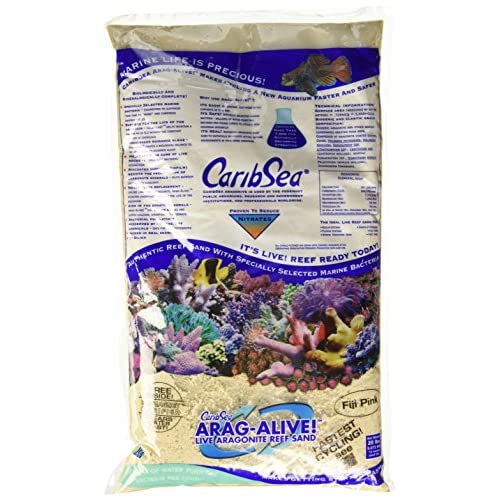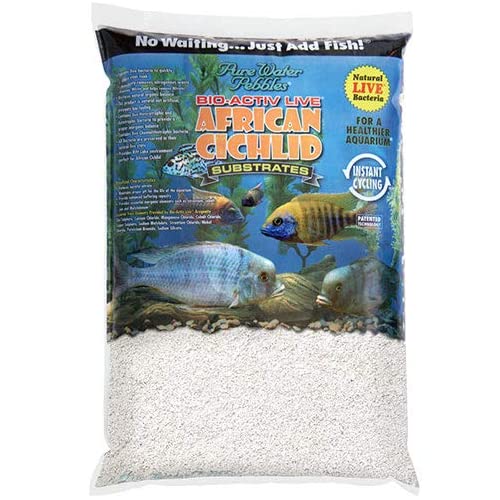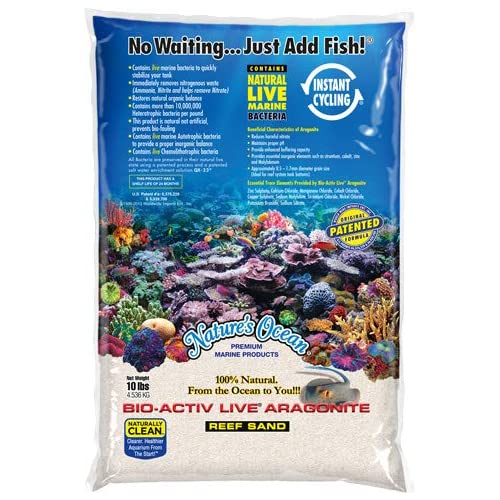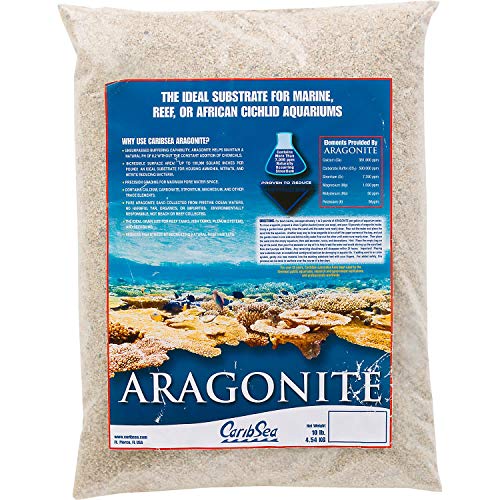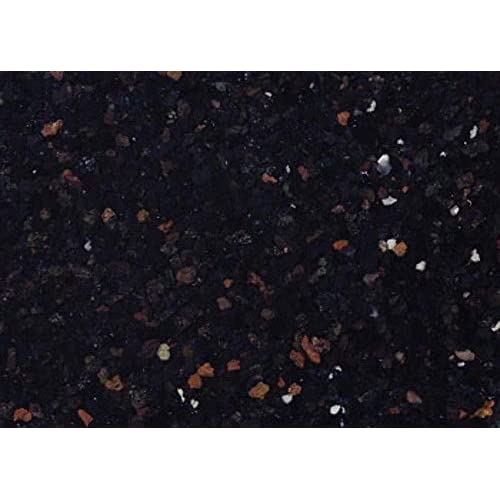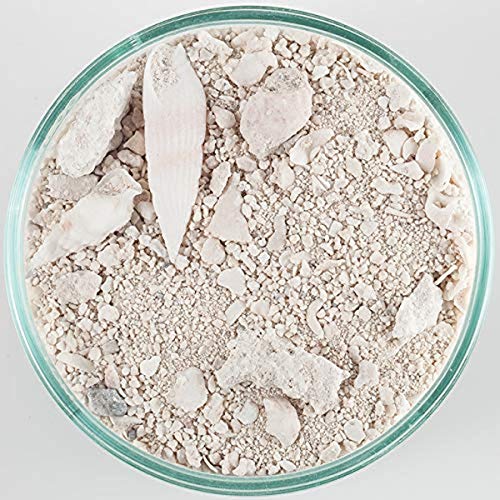The reef tank is becoming a popular choice for those who love the beauty of the ocean and want to bring it back to their living space.
The reef tank has a remarkable and very attractive beauty. But it also requires careful care in order to maintain the best state. And one of the requirements for a healthy reef tank to survive is to use the right substrate.
Choosing the best substrate for reef tanks is not too difficult but requires you to have a certain understanding of the suitable substrate for it. And for beginners, this can be a tough challenge.
But do not worry, we have prepared a list of the best substrate for reef tanks, along with some other relevant information.
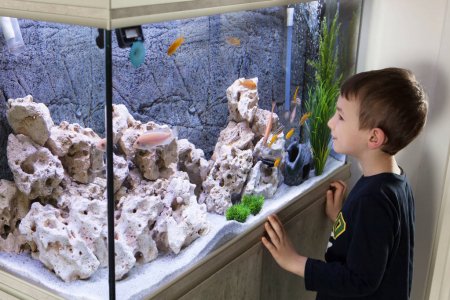
Top 6 Best Substrate For Reef Tank Review 2021
#1 Carib Sea Arag-Alive 20-Pound Fiji Pink Sand (Best Overall)
This is one of the best options we find on the market and you can count on the quality of this product. It is also a substrate that many customers choose and appreciate.
This substrate can provide numerous beneficial bacteria including autotrophic, chemolithotrophic and heterotrophic bacteria. These probiotics play an important role in waste treatment and help shorten the time to set up a new tank.
This live sand provides the healthiest and purest living environment for tank creatures. It will work immediately when you put it in the tank and do not need to wait too long for it to get used to a new environment.
This product is considered as a biological filter where bacteria colonies can grow. It is also capable of removing ammonia as well as filtering nitrates from water, creating an ideal living environment.
Besides, this product does not affect the pH of the reef tank. It also helps maintain an ideal pH for the habitat of tank organisms.
This substrate also brings a high aesthetic to the reef tank. You don’t need to mix any substrate to accentuate its appearance. It also does not use any chemicals to create this color.
In particular, this substrate does not need to be replaced at any time because it can always produce good bacteria and eliminate waste products. When you combine it with regular cleaning and combine it with a filter, there’s nothing to worry about.
#2 Pure Water Pebbles Bio-Activ White Live Sand (Best White Sand)
This is the best white sand we can find on the market. Although it is not a completely pure white, this color is enough to make your reef tank stand out.
This substrate can be used with salt water and fresh water environment. It also acts as a biofilter that helps grow beneficial bacteria and eliminate waste products.
It can remove ammonia as well as nitrogen waste, thereby providing an ideal habitat for tank organisms. Not only that, but it also ensures the pH in the tank is always maintained at the safest level for the organisms in the tank.
This product has a very good grip, it will immediately cling to the tank when you put it inside the tank. It also does not cause much clutter or clouds when encountering any small movement.
This substrate is also ideally suited to replicate the African Cichlid environment. These colorful fish are perfect to pair with the outstanding coral reefs. It comes with a 20 lb package so you can use it for any tank size.
#3 Nature’s Ocean Aquarium Sand BIO-ACTIV Live (Best Quality)
Nature’s Ocean substrates are always the first choice from customers. This manufacturer always produces the most effective and quality products for any saltwater or freshwater tank. And this substrate is definitely a good quality product for your reef tank.
This substrate is completely natural sea sand without any chemicals or colorings. It is also stored in the best state so as not to affect beneficial marine bacteria.
That is also the reason that it can adapt quickly when placed in your reef tank. That means cycling is not as time-consuming as conventional substrates. You can add any creature to the tank without having to wait until the next day.
This substrate not only provides many beneficial bacterial colonies to coral habitats but it also has the ability to remove some wastes. It can remove ammonia and nitrate from the environment and cooperate well with the filter. This product also does not affect the pH of the tank.
#4 Carib Sea Aragonite Aquarium Sand (Best Budget)
If you are on a tight budget then this substrate is the most reasonable choice for you. It is sand that works well with reef tanks and comes at a great price. And it is a product from Carib Sea, don’t worry.
This product is sand in the deep sea, absolutely not sand from the beach like some other products. Therefore, it is very friendly with corals and is an ideal element to maintain a healthy state for the tank creatures.
This substrate is also an ideal place for beneficial bacteria to grow. According to the manufacturer’s information, there are 10,000 square inches of area in every pound of sand for beneficial bacteria to grow. This is an impressive figure for a substrate reserved for reef tanks.
Not only does it provide a great number of probiotics to the tank’s habitat, but it can also control harmful substances, nitrates and remove ammonia.
You also don’t have to worry about the pH of the water being affected because this product always maintains it at an ideal level – 8.2. So you don’t have to add any other products or chemicals to maintain the pH.
#5 Carib Sea Arag-Alive Substrate (Best Black Sand)
If you are looking for a very striking substrate for reef tanks, then black sand is a wise choice. This black sand from Carib Sea is the leading candidate and you can totally trust this product.
This black sand can be used to simulate a variety of habitats from freshwater aquaria to African cichlids. However, it is best for reef tanks. And choosing it for your reef tank will not make you regret it.
This substrate contains millions of beneficial bacteria for the habitat of the organisms in the tank. Besides, it also plays a good role in biofilter when it can remove and control ammonia, nitrate and other toxins.
This product is slightly larger in size than conventional sand. But these particles are not pebbles and you are paying for special textured sand.
This substrate is not completely black but contains about 20% white sand and red sand. However, it still has a special appearance and can highlight your reef tank.
It does not cause any clouds when you put it in the reef tank. And under the influence of tank equipment such as filters, pumps, or air pumps, the substrate is heavy enough not to be moved around the tank.
#6 Carib Sea Ocean Direct Substrates (Best Fine)
We do not favor Carib Sea or have any personal love for the manufacturer. The reason that products from Carib Sea constantly appear on this list is that they are all of a good quality that we couldn’t ignore.
This substrate is 100% natural ocean sand and is taken directly from the ocean floor. It undergoes careful storage to keep certain beneficial bacteria and naturalness.
This product is packed with a thin sea film, allowing beneficial bacteria to continue to grow. It is also exchanged for air thus reducing the ability to accumulate toxins and grow other types of bacteria.
It doesn’t take long to cycled and you don’t need much intervention to set up a new tank. With this substrate, you can add fish or reef the same day without waiting any longer.
This substrate has good fineness and it makes your reef tank look natural. It will probably create clouds when you first add it to the reef tank, but it won’t cause any further clutter. It also does not affect the filter or other equipment in the tank.
How To Keep Your Substrate Clean In Reef Tank?
A reef tank is more special than other tanks in that it does not require you to spend a lot of time and effort cleaning it regularly.
And the same is true for the reef substrate, you don’t need to clean it often but you still need to know how to clean it to maintain the ideal and healthiest living environment.
For a reef tank, you can raise some other fish to clean the coral or other debris in the substrate. These fish are often called gatekeepers and they do a good job as a cleaner.
You can find more information about these fishes so you can choose the one that best suits your reef tank. Most of them have a colorful, small size and do not require much special care.
Besides, you can use specialized substrate cleaning equipment to remove debris quickly. These may be an aquarium siphon or vacuum cleaner.
These devices are cheap and do not require a lot of technology to be used. They will help you remove the reef debris quickly and professionally.
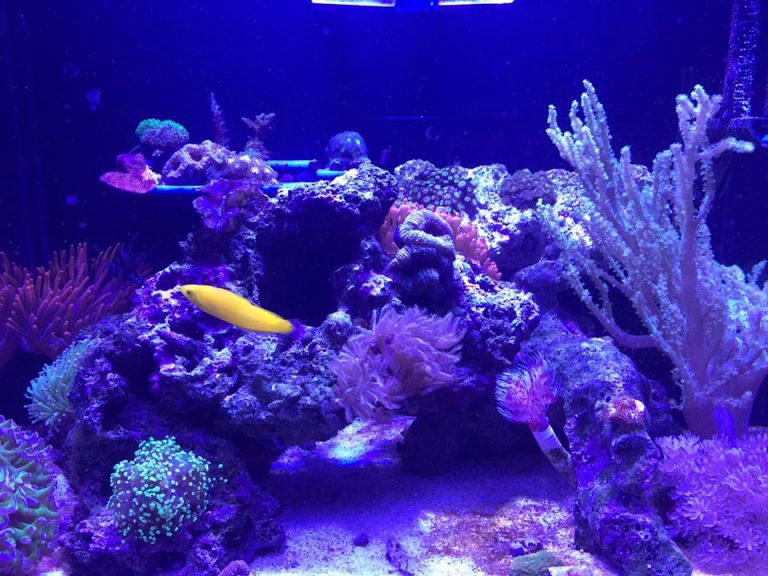
What To Consider When Choosing The Best Substrate For Reef Tank?
Choosing the best substrate for reef tank is not a complicated task, but it is not entirely simple. You need to consider and understand the reef tank to be able to choose the most suitable product.
You should never rush to select a product indiscriminately. This bypass can have a bad effect on your reef tank when choosing the wrong substrate.
And to help those who are not experienced can choose the best substrate for reef tank, we have listed a number of factors that you should consider when choosing.
#1 What kind of substrate do you want?
The most common and ideal substrate for reef tanks is sand. There are some people who like to use gravel but it’s really not really the most perfect for coral growth.
There are two types of sand that you should consider: dry sand and live sand. Dry sand is cheaper, but it does not contain any beneficial bacteria, so it takes time for them to grow.
The live sand is usually natural sand taken directly from the seafloor and already contains beneficial bacteria. It doesn’t take long to set up a new tank so you can save a considerable amount of time.
#2 What is the particle size?
You also need to pay attention to the particle size of the substrate to be able to choose a suitable sized product for your reef tank. Particle size affects not only the aesthetics of the tank but also the habitat of the organisms.
Small and fine particle size will be blown up by the flow of impact device. It can cause clouds or clutter in reef tanks. These flows will continuously impact on the substrate to push debris upwards, thereby facilitating filter operation.
With larger particle sizes, it will not easily cause any clutter. However, large particles often have gaps and debris that can easily enter here. And it will be very difficult for currents to push this debris out of the substrate.
#3 Is it safe for tank life?
You really need to pay attention to this issue because it directly affects the health of the tank creatures. There are many manufacturers that use chemical detergents or colorants for substrates, so you need to pay special attention.
Any chemical is unsafe for long term use in reef tanks. They can cause adverse health effects, even causing death to corals and other animals.
You should choose 100% natural substrates, carefully preserved so as not to harm corals as well as other creatures. These substrates will probably be more expensive than regular models, but it’s worth the investment.
Final Verdict
According to our assessment, all substrates from Carib Sea are of good quality and you can count on their quality. The most prominent of these is the Carib Sea Arag-Alive 20-Pound Fiji Pink Sand, which we consider to be the best buy. Besides, Nature’s Ocean Aquarium Sand BIO-ACTIV Live is also a good choice.
Before choosing a substrate for your reef tank, you should take the time to learn about the product so you can choose the one that best suits your tank.
